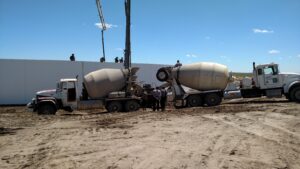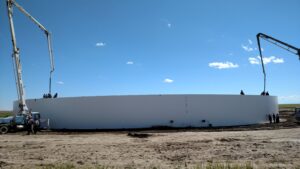CONSTRUCTION DETAILS
Dimensions: 213’ Diameter, 16’ Depth, 10” Concrete (un-insulated)
Capacity: 4m gallons
Wall Area: 13,313 sq.ft
Crew Size: 20 – 25
Time: 10 days
Location: Shelby, Montana
DAY 1
Construction started on a sunny day in Montana! The team kicked off the morning with a quick training session hosted by our field technician Mel Pitts. This included an overview of the Octaform components and the assembly drawings. These drawings will show details of the wall assembly, cross-sections of components with the material count, and crate numbers to locate the material.
Bracing is the first critical step in any project. The team erected 660 lineal ft of wooden bracing on the first day. Using the material crates as tables, a couple of the team could get started pre-assembling the interior wall panels in sets of three. The first panel can be fastened to the ledger board as soon as the first section of bracing is erected. Connectors can be slid down simultaneously into the channels of the interior panels.
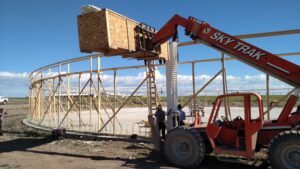
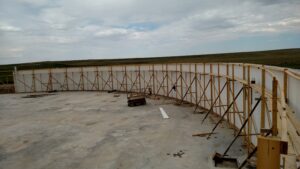
DAY 3
Rebar placement can begin as soon as the first 40’ of connectors are installed. Rebar should only be placed through the large center holes of the connector webs.
The crew utilized half a PVC pipe over the rebar, giving it clearance from the internal components. This prevented friction and eliminated potential damage to the connectors. The vertical rebar is placed within the same cells as the foundation dowels.
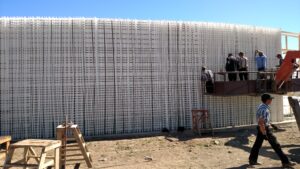
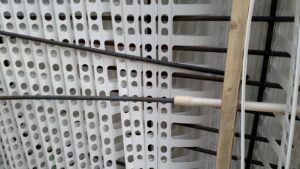
DAY 5
The external panels are slid in vertically anywhere on the outer diameter. These can easily be slid up for rebar inspection. It is important to have one of the crew inspect the rebar as you assemble to ensure the horizontal rebar is properly tied. In the case that a damaged connector is found, this is easily repaired using nylon zip ties on the top and bottom of the web.

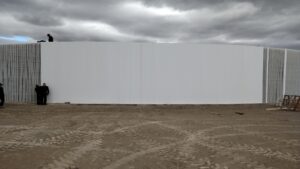
DAY 9
Before placing the concrete, a final detailed inspection is completed, for missing internal components, insulation that is improperly fitted, stability of the bracing system, and any other unusual defects.
Concrete should typically be placed in the Octaform wall system at a rate of no more than 4’ (1.2m) height lifts per 60 minutes. Plasticizer was added to concrete to improve flowability through the forms.
Due to the large diameter of the tank, two pumper trucks were used simultaneously. A pencil vibrator helped eliminate honeycombing, pockets of voids, and air bubbles to maximize the strength of the concrete. Once poured the walls were screeded level using a trowel while a power washer cleared any excess concrete.
